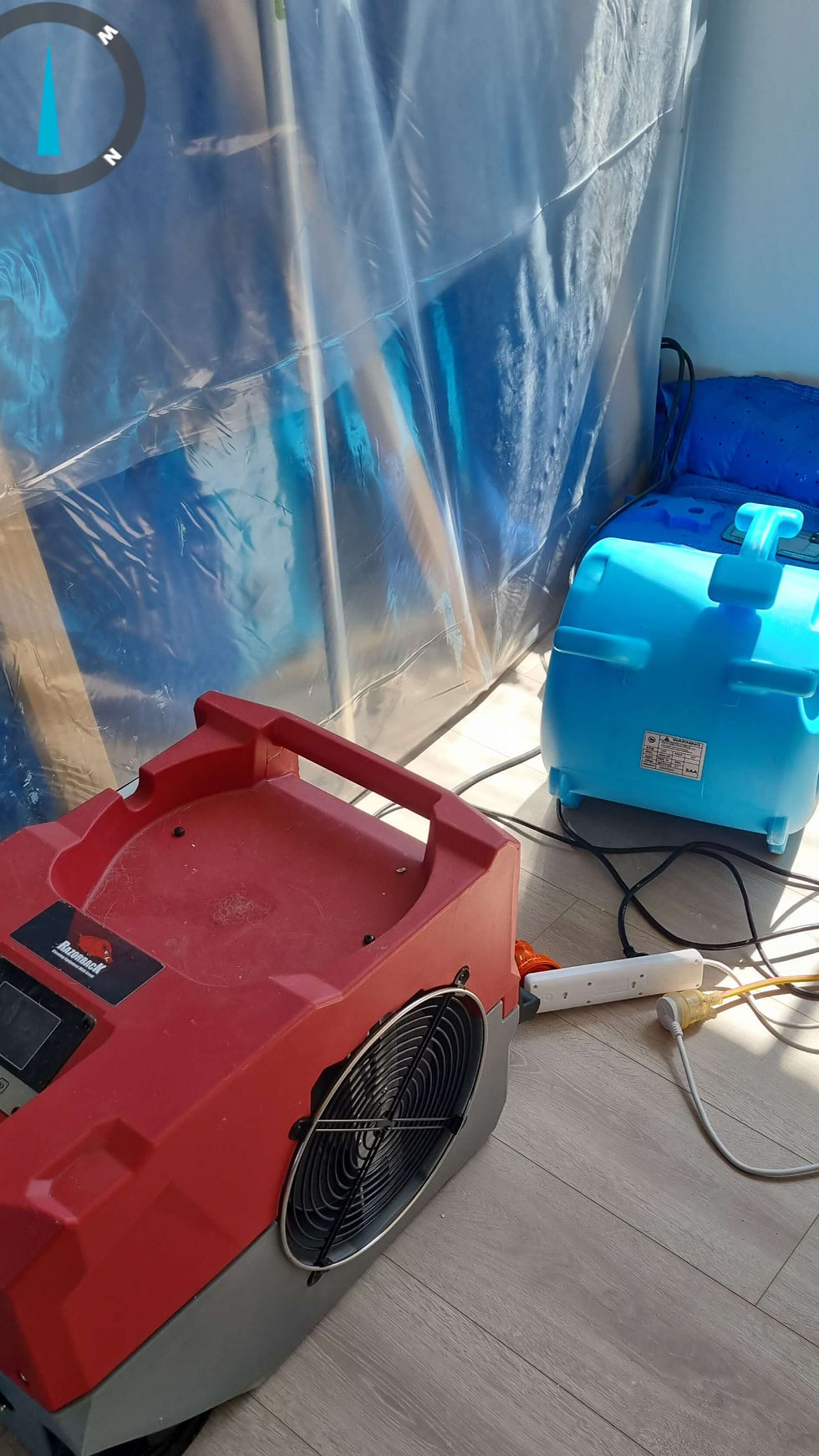LGR vs Desiccant Dehumidifiers: Why We Use Both to Dry Flooded Properties Faster
- Michael Nguyen
- Jul 10
- 4 min read
At AAA Mould Removal, we understand that no two flood restoration jobs are the same. That’s why we don’t rely on a one-size-fits-all approach when it comes to structural drying. In this blog, we’re unpacking the difference between LGR (Low Grain Refrigerant) and Desiccant Dehumidifiers — and why we own and use both across Sydney flood damage projects.
Whether it’s a burst pipe, stormwater intrusion, or rising damp, choosing the right drying equipment is critical to prevent mould growth and restore property health quickly.
🌀 What Are LGR Dehumidifiers?
LGR Dehumidifiers remove moisture from the air by cooling it, condensing the water, and draining it out. They’re highly efficient in warm and humid environments — typical of Sydney summers. We operate a fleet of 40 LGR units which are:
Energy-efficient
Quiet
Portable enough for residential and commercial use
Effective at maintaining consistent low humidity
💡 We use LGR units for projects like this Castle Hill timber floor restoration where internal temperatures remain stable and flooring materials require gentle, controlled drying.
❄️ What Are Desiccant Dehumidifiers?
Desiccant dehumidifiers absorb water vapour using a desiccant wheel (often silica gel), which is then dried through a heating process. Unlike LGRs, they work extremely well in colder environments — ideal for winter or unheated properties.
We use 10 industrial desiccant units, especially during Sydney’s colder months. These machines:
Operate effectively in sub-10°C conditions
Extract deep moisture from walls, subfloors, and hidden voids
Work perfectly alongside our Drymatic thermal drying systems
For large-scale jobs such as the Inner West Sydney unit block storm response, desiccants ensure no moisture is left behind — even in plaster, bricks, or under flooring.
🔧 Why We Use Both – and Own Our Fleet
At AAA Mould Removal, we don’t rent machines. We own our equipment, which means:
Faster response times (no equipment delays)
Lower project costs for our clients
Consistent quality control across every job
Each job starts with an on-site inspection from our IICRC Certified Applied Structural Drying technician. Based on the materials, room volume, temperature, and humidity, we determine the most effective combination of drying tools.
You can read more about our flood drying approach on our Flood Damage Restoration page.
🧠 Choosing the Right Equipment Means Faster Recovery
Using the wrong dehumidifier can:
Extend drying time
Increase mould risk
Cost you more in power bills
By pairing LGR and Desiccant Dehumidifiers, we create the optimal drying environment for every floor type — from tiles and concrete to carpets, engineered timber, and vinyl.
We monitor every project with remote telemetry for 24/7 oversight and detailed drying logs — perfect for insurance claims. See how we used both systems on this commercial office flood in Parramatta.
Photo Gallery Of Our Dehumidifiers Drying Equipments Onsite


✅ Trust Sydney’s Drying Specialists
We are Sydney’s trusted experts for water damage restoration, offering:
Free inspections for homeowners
24/7 emergency response
IICRC-certified technicians
Looking for fast, professional flood drying in Sydney? Learn more or book an inspection today.
🧠 Frequently Asked Questions – LGR & Desiccant Dehumidifiers
❓ What is the difference between LGR and desiccant dehumidifiers?
LGR (Low Grain Refrigerant) dehumidifiers are more efficient in warmer, humid environments, whereas desiccant dehumidifiers excel in cooler temperatures. We use both depending on conditions to optimise flood drying.
❓ Why do you use both types of dehumidifiers?
Using both allows us to adapt to any climate or material type. LGRs are energy-efficient in warm conditions, while desiccants are perfect for colder weather or drying dense materials like concrete and timber.
❓ Are your dehumidifiers energy efficient?
Yes. We invest in low-power, high-performance machines that comply with all Australian standards. This allows us to dry buildings faster without spiking your electricity bills.
❓ Do you bring your own drying equipment?
Yes. AAA Mould Removal owns a full fleet of 40+ LGR and 10 desiccant dehumidifiers. This gives us full control over equipment quality, availability, and pricing — no rental delays, no compromise on performance.
About the Author
Michael Nguyen is the founder of AAA Mould Removal and a leading expert in mould remediation and building science. His mission is to help Sydney residents maintain healthy indoor environments through scientifically-backed, professional remediation services.
With a unique combination of hands-on and academic expertise, Michael's qualifications are extensive:
IICRC Certified: Water Damage Restoration, Applied Microbial Remediation & Applied Structural Drying.
Microbiology: Completed specialised study in Microbiology at RMIT University.
Licensed Builder & Carpenter with a Diploma in Building & Construction.
Current University Studies: Double Bachelor’s degree in Medical Science and Environmental Science at Macquarie University.
This deep understanding of building structures, environmental science, and microbiology allows Michael to diagnose the root cause of mould problems, not just treat the symptoms. He specialises in residential and commercial mould removal, black mould treatment, and water damage restoration.
Need a true expert to assess your property? Contact AAA Mould Removal today for a comprehensive inspection.
.png)



Comments